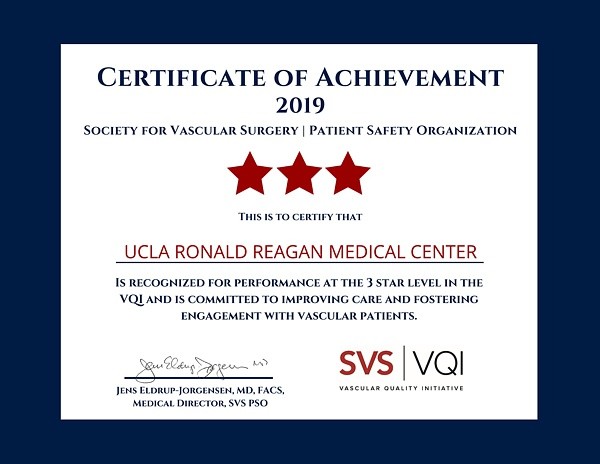DATA REGISTRY ABSTRACTION
Ronald Reagan UCLA Medical Center
Direct Difference Delivered Timely, Accurate Data Abstraction in support of UCLA Ronald Reagan’s participation in the Society for Vascular Surgery Vascular Quality Initiative. UCLA received a Certificate of Achievement with a Three Star Rating! For more information about SVS/VQI, please go to www.vqi.org. Ask how we can help with your VQI data by clicking here.
NTDB National Trauma Data Standard
As many administrators are aware, the National Trauma Data Bank® (NTDB) data is not standardized. This has created a problem among caregiver organizations because data abstraction results may differ from facility to facility. The comparisons are difficult at best and could warp your abstraction results.
The composite data was achieve by blending registry databases of many hospitals using the National Trauma Data Standard (NTDS) from the National Trauma Data Bank (NTDB). The cumulative data resulted in the creation of the Trauma Quality Improvement Program (TQIP) initiated by the American College of Surgeons (ACS).
The NTDB Data Standard is useful for:
- Developing Nationwide Trauma Benchmarks
- Evaluating EMS, Hospital and Trauma Systems Patient Outcomes
- Facilitating Research Efforts
- Determining National Trends in Trauma Care
- Addressing Resources for Disaster and Domestic Preparedness
- Providing Valuable Information on Other Issues or Areas of Need Related to Trauma Care
Why comply?
According to the American College of Surgeons, as of 2014 more than 200 Level I or Level II trauma centers are participating in TQIP. What this means is that TQIP is tracking the nation’s highest performers in trauma treatment. Enrollment requirements allows hospitals to join at any time. Additionally, there is a pediatric TQIP pilot with nearly 40 participating centers is currently underway.
Simplifying the Process
Direct Difference offers complete compliance with the NTDB standardization offered by the National Trauma Registry (NTR). This standardization enables U.S. hospitals to share primary components of collected data on a national scale. This widespread sharing model promises to facilitate improvements in both patient care and trauma training.

















